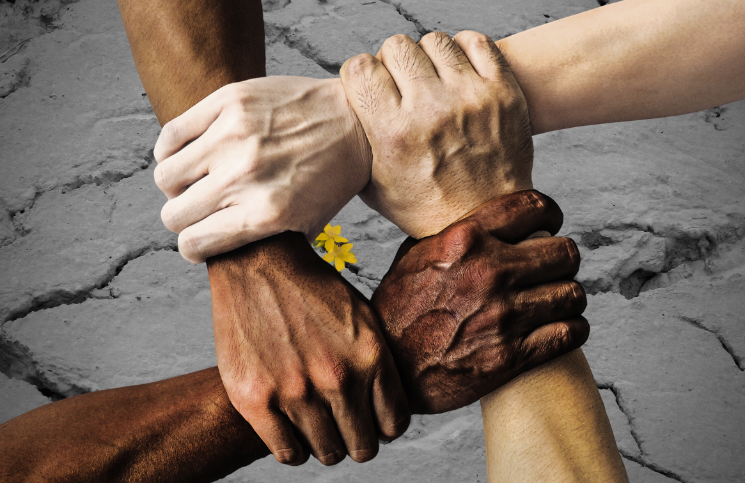by Gary Kaplan
History doesn’t repeat itself, Mark Twain observed, but it often rhymes.
Because of our peculiar history, the current calls for redirection of police funding to social programs fall with a familiar cadence at JFYNetWorks.
We are often asked what JFY stands for. It stands for Jobs For Youth, the original name of the nonprofit organization. Jobs For Youth was founded in 1976 with a Juvenile Justice and Delinquency Prevention grant from the US Department of Justice. Our original mission was to help high school dropouts find jobs. Low-income youth were dropping out of high school at rates rising toward 20% nationally and 40% in the cities. In the early 1970s the Nixon Administration, predating Reagan, thought the best social program was a job. And so, our history began as a juvenile justice delinquency prevention program.
Those early years focused on “job readiness training,” which included time management, professional dress, manners and speech, and interviewing skills. The program also covered job applications and resume composition, which led to tutoring in reading and writing, which blossomed into a GED alternative diploma program and eventually into one of the first alternative high schools. In Massachusetts, economic enfranchisement through education was the antidote of choice to injustice.
Through the 1980s and 90s we kept pace with the labor market by creating high-skill training programs in biotechnology, financial services, health care and environmental technology in collaboration with universities that had expertise in the fields. These programs required higher levels of academic skills, so we developed prep courses using educational software. We found self-paced computerized instruction to be effective in raising reading and math skills. When standards-based education came to K-12 in the late 1990s we adapted our methodology to the state high school curriculum. Software-based instructional support to high schools and then middle schools soon became our largest program.
The link between education and earnings was clear then and is even clearer now. As we have noted many times, an associate degree is worth $275,000 more in lifetime earnings than a high school diploma, and a bachelor’s degree raises the ante by a million. As the 2000s progressed, it became clear that the most effective way to promote economic and social justice was to focus on high school graduation and post-secondary education or training, the widest and straightest path to economic stability and social mobility. In 2009 we formally adopted the rubric “College and Career Readiness.” This new policy language of government and philanthropy accurately described what we had been doing since 2000.
Have our efforts produced results? At the micro level, yes. We provide academic support to urban schools where the gaps are widest and the needs greatest. We have raised skills and scores for thousands of young people every year for two decades. We have saved students millions of dollars in remedial college tuition. We have helped schools raise graduation rates and college enrollment rates. Our track record looks very good.
But the macro level does not look as good. The Times ran a sobering piece last week on inequality (“Quantifying The Inequity Many Face In Finance,” NYT 6.10.20). In the echo chamber of articles and books and TV specials on this subject over the last few years, this broadside reverberated jarringly. To paraphrase the lede, “We cannot quantify injustice… but we can measure the economic inequity that serves as backdrop.”
The story catalogued Black-white inequity in household income, college graduation, student loan debt and default, wages, home ownership, retirement funds and inheritance. All these gaps have widened since the 1970s. The home ownership gap is the widest in 50 years. Many other indicators could be added to the list. The Boston Globe series on race in December 2017 unearthed the most shocking: median net household worth. The number for white households in Boston was $247,500. The median net worth of African American households was $8.00. The Globe had to run a follow-up to clarify that wasn’t a typo—it really was eight dollars.
Justice can be an elusive concept. But no one can call the gap between $8 and $247,500 an equitable distribution of wealth. No one can say that 40 years of widening inequality is good for the civic health of a society. All the vehicles of social funding in the US—youth programs, jobs programs, welfare, education, even food stamps—have been decimated since Nixon’s burst of pragmatic liberalism. Police department reform alone cannot correct systemic economic injustice.
The Times article offered a blunt summary: “An imbalance of societal power cannot be separated from cradle-to–grave economic inequality.”
JFYNetWorks was founded on the belief that all young people can find their own unique path to success in our dynamic economy– if they acquire the right skills. We have no magic trowel or miracle mortar to tuckpoint the fissures of inequity in the foundations of our society. What we do have is an education program that helps young people develop the skills that open the doors of opportunity.
We still believe that economic empowerment through education is the path to social justice. We will continue to put that belief into practice as long as equality remains a bedrock American value. Forty-four years after our birth under the sign of Justice, we still hold this truth to be self-evident. It’s in our DNA.
Gary Kaplan is the executive director of JFYNetWorks
HOW ARE WE DOING? In our pursuit to serve up content that matters to you, we ask that you take a couple of minutes to let us know how we’re doing? Please click here to be navigated to our JFYNet Satisfaction Survey. Thank you!





